#malayali cinema
Explore tagged Tumblr posts
Text
എല്ലാരും ഹാപ്പി അല്ലെ?
22 notes
·
View notes
Text
Gulf migration is not just a major phenomenon in Kerala; north Indian states also see massive migration to the Gulf. Uttar Pradesh and Bihar accounted for the biggest share (30% and 15%) of all Indian workers migrating to GCC1 countries in 2016-17 (Khan 2023)—a trend which continues today. Remittances from the Gulf have brought about significant growth in Bihar’s economy (Khan 2023)—as part of a migrant’s family, I have observed a tangible shift in the quality of life, education, houses, and so on, in Siwan. In Bihar, three districts—Siwan, Gopalganj, and Chapra—send the majority of Gulf migrants from the state, mostly for manual labor (Khan 2023). Bihar also sees internal migration of daily wagers to Delhi, Bombay, and other parts of India. Gulf migration from India’s northern regions, like elsewhere in India, began after the oil boom in the 1970s. Before this time, migration was limited to a few places such as Assam, Calcutta, Bokaro, and Barauni—my own grandfather worked in the Bokaro steel factory.
Despite the role of Gulf migration and internal migration in north Indian regions, we see a representational void in popular culture. Bollywood films on migration largely use rural settings, focussing on people who work in the USA, Europe, or Canada. The narratives centre these migrants’ love for the land and use dialogue such as ‘mitti ki khusbu‘ (fragrance of homeland). Few Bollywood films, like Dor and Silvat, portray internal migration and Gulf migration. While Bollywood films frequently centre diasporic experiences such as Gujaratis in the USA and Punjabis in Canada, they fail in portraying Bihari migrants, be they indentured labourers in the diaspora, daily wagers in Bengal, or Gulf migrants. The regional Bhojpuri film industry fares no better in this regard. ‘A good chunk of the budget is spent on songs since Bhojpuri songs have an even larger viewership that goes beyond the Bhojpuri-speaking public’, notes Ahmed (2022), marking a context where there is little purchase for Gulf migration to be used as a reference to narrate human stories of longing, sacrifice, and family.
One reason for this biased representation of migration is that we see ‘migration’ as a monolith. In academic discourse, too, migration is often depicted as a commonplace phenomenon, but I believe it is crucial to make nuanced distinctions in the usage of the terms ‘migration’ and ‘migrant’. The term ‘migration’ is a broad umbrella term that may oversimplify the diverse experiences within this category. My specific concern is about Gulf migrants, as their migration often occurs under challenging circumstances. For individuals from my region, heading to the Gulf is typically a last resort. This kind of migration leads to many difficulties, especially when it distances migrants from their family for much of their lifetime. The term ‘migration’, therefore, inadequately captures the profound differences between, for instance, migrating to the USA for educational purposes and migrating to the Gulf for labour jobs. Bihar has a rich history of migration, dating back to the era of indentured labor known as girmitiya. Following the abolition of slavery in 1883, colonial powers engaged in the recruitment of laborers for their other colonies through agreements (Jha 2019). Girmitiya distinguishes itself from the migration. People who are going to the Arabian Gulf as blue-collar labourers are also called ‘Gulf migrants’—a term that erases how their conditions are very close to slavery. This is why, as a son who rarely saw his father, I prefer to call myself a ‘victim of migration’ rather than just a ‘part of migration’. It is this sense of victimhood and lack of control over one’s life that I saw missing in Bollywood and Bhojpuri cinema.
— Watching 'Malabari Films' in Bihar: Gulf Migration and Transregional Connections
#bhojpuri indentured history#malayalam cinema#bihari labour migration#gulf migrant labour#malayali labour migration#bollywood cinema#bhojpuri cinema#nehal ahmed
22 notes
·
View notes
Text










Aavesham (2024)
Directed by Jithu Madhavan
#Aavesham#Jithu Madhavan#cinema#Fahadh Faasil#Hipzster#Mithun Jai Shankar#Roshan Shahnavaz#Sajin Gopu#2024#India#Malayali#olvaset
15 notes
·
View notes
Text




Kummatty (1979), dir. Govindan Aravindan
#dialogising experience#film tag#maanblr etc#images#indian films#indian cinema#film#malayali film#malayalam#movies
3 notes
·
View notes
Text
Thoughts on Kalki 2898 AD
For any new watchers, it might help to get some context. Kalki 2898 AD is about the emergence of Kalki, the last and 10th Avatar or Avataram of Lord Vishnu. There are 4 yugams according to Hinduism. Satyayugam, Tretayugam, Dwaparayugam and Kali Yugam. When evil shadows the world, Vishnu is born into Earth as a human to rid all evil. Krishna is one such very popular avataram of Vishnu. Kalki, the last Avatar has not yet appeared in Kaliyugam( the most evil of all times) and this movie is an imagination of that probable time.
Spoiler Alert!
Cons-
The dialogue, I understand that they now live in a place of amalgamated cultures but why does some of it sound so bad?? I watched the Malayalam dubbed version in theatre and it is actually not that bad but still this use of english slang that sounds so awkward and which can be easily replaced with regional slang is so annoying. For example why does the rebel fighter keep calling bhairava "bro" 😭. Especially when it can be replaced with "chetta" or " anna".
The names, Characters that should have traditional names like Shobana's character has Mariam, I mean Huh?? Who thought this was a good idea? Prabhas's character has a name that does not suit him even slightly( sorry guys but Bhairava is reserved for Ram charan's Magadheera, and he actually lives up to the name) It does not fit him thematically either bcz Bhairava is a form of Lord Shiva and that is not connected to Prabhas's character in any way whatsoever . As they revealed him as Karna at the end, they could have given him a name connected to being a son of the Sun god or smth like that. And the women's names. Sigh. Guys didn’t we all agree about using names like Kyra in Indian cinema. Then why does this KEEP HAPPENING. I mean Kyra, Mariam, Raya, Roxy(her character is another issue entirely)???What. Why. We have a bajillion good indian names both traditional and modern and u choose this, really. And if they're so adamant on using western names, use good western names like Rose or smth. Also who wants to bet that they thought they were the only ones who watched Raya and the Last Dragon and thought it'll be a good name for a indian girl.
THE TREATMENT OF FEMALE CHAARCTERS, I have been yapping about this for years to my sis so I might as well yap here too. Does the movie have good female characters? Yes. Does it treat them well? Hell no. Kyra, dead. Mariam, dead. Leela, left to die, probably dead or used as a sex slave. Roxy, there to add some spice and romance into Bhairava's boring life and consecutively forgotten and never seen again. Good thing Raya is a literal child or the writers will probably kill her off too. And it's the way their deaths have no meaning too. The man who Kyra sacrificed herself to kill is alive actually! Mariam after barely escaping death in the aircraft just gets stabbed by the villian. Sumati's case is gonna be a bit more controversial bcz while i like that she is free from the lab and might get a life of her own, it still doesn't stick quite right with me on her being told by Aswathama that her dharmam is to give birth to kalki ( more accurate and appropriate wording would've been duty or 'kartavyam') I forgot about Mrunal Thakur's character's death at the beginning bcz it had no impact at all. I don’t understand how the man who directed Mahanati could do this to the women of his movie.
Casting choices, You can sue me to hell and back but Prabhas was..not a good choice for Bhairava or as he is revealed to be, Karna. Let's be honest, every single movie after Bahubali was a huge huge miss for him and i'm almost convinced now that the reason Bahubali was such a hit was bcz of Rajamouli and the immense talent he was surrounded by like Anushka Shetty, Sathyaraj and Ramya Krishnan. For all the marketing they did for him as presenting him as the central character, he is not the main character(as he should be bcz I doubt he'll do a good job of it). His acting stands out like a sore thumb amongst Amitabh, Shobhana and Deepika. And i'm kind of disappointed that he's Karna bcz Karnan is such a complex and good character. Unpopular opinion but DQ should've been Karnan. He just fits. And Vijay Devarokonda does not fit Arjun either. His lines feel flat and emotionless. Maybe instead of casting popular Telugu names they should've casted people who actually fit and can act.
Bcz I sing, I feel slightly qualified to comment on the music in the movie. Prabhas's romance song needs to get burnt to ashes immediately bcz what. what even was that. Ew. But the theme of Kalki immediately bought back my hope for music in the movie bcz that was excellent. But I still feel like it could have been better by adding female singers in a lower pitch. The contrast would've been phenomenal. Bahubali's music director Keeravani already used these techniques in the Mahismati song guys, it's a guaranteed hit. Or maybe it's just my disappointment that there weren’t more female voices.
Krishna's voice should've been sweeter. He is pookie ok? and he deserves a sweet voice. I'm pretty sure he's described to have a voice that melts your heart. His current voice would've suited Balaram more.
Pros:-
The VFX was actually not that bad. Compared to the usual, it was miles better.
Amitabh as Aswatthama, Kamal Hassan and Shobhana delivered. They were absolutely excellent.
The little details were great. Humans get smaller through the progression of the yugams so Aswatthama being 8 feet bcz he was from the Dwapara Yugam fit perfectly. The mythical city Shambala. The little sculpture of Kalki, Bhairava holding and protecting the statue of vishnu from falling( foreshadowing?), Ashwattama meditates near Kashi's shivalingam, Gandhivam, the 5 objects around Supreme(Kamal Hassan) being the 5 evils.
Bujji, sarcastic and fun AI is always always a plus. Healthiest relationship that Bhairava has with anyone in the movie. And voiced by Keerthy Suresh? Double plus.
So many malayalam actors, it makes my malayali heart sing. Anna ben from Kubalangi nights, Shobhana and DQ 😭😭, and Malavika Nair as Uttara too. We were fed so well, just wish they did’nt kill all of them.
The inclusion of cringe english lines might've been dissapointing but the inclusion of races all over the world absolutely made up for it. Shambala's citizens being of all races, black, white, east asian, middle east and all of them being equally happy at Kalki's return made me cry. Hinduism and God is for every single person on earth regardless of their ethnicity. " Vasudaiva Kudumbakam" meaning the entire world is one family was embodied so WELL in that scene, I am floored.
No matter how many times Deepika walks into fire, she does it perfectly every time. Also that parallel between the birth of Krishna and Kalki!! Vasudeva walks through water while Sumati walks through fire. Literal chills
One can't mention chills without mentioning Krishna. It was the absolute BEST part of the movie no doubt. And not revealing his face was the best decision they made in the movie, the audience unknowingly understands that he is pure divinity. And he's Dark skinned too!! Granted he's said to be as dark as the rain clouds but meh, i'll take what I can get. I doubt that an actor with a skin colour like that is accessible. But not revealing his face and letting only the horse and his silhouette show was such a good choice, I can’t get over it.
The monks with guns 🙂
The Shambala weapons in the shape of Murugan's spear??😭 Excuse me while I cry.
The Mahabharata scenes
Supreme(Kamal Hassan) taking one drop of Kalki's essence and reviving from a Skeleton to a normal human body and that LAST POSE OMG
So even though the movie had it's flaws the good parts alone were all worth it and the theatre experience is phenomenal. The simple fact that all of this is going down and lil Kalki has'nt even been born yet is hilarious to me. It could definitely have been better but the parts that mattered, they did well.
And the iconic scene, Sree Krishna himself (forgive the trashy quality)

#kalki2898ad#Kalki Avataram#yes i am malayali i will say avataram deal with it#ok but srsly prabhas needs to up his game it feels like he's still riding off the bahubali high#This one scene of Krishna made me go to a theatre and oh it was worth it#indian cinema#my post
5 notes
·
View notes
Text
Heroes of Malayalam Cinema Part 1: Ft mostly Mohanlal, DQ, and Tovino
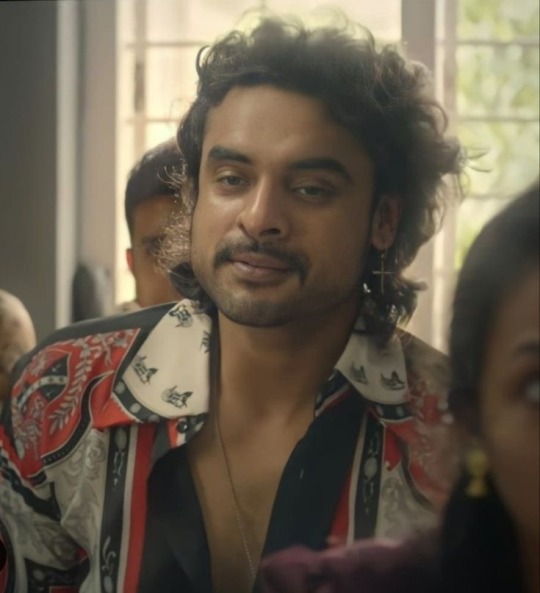
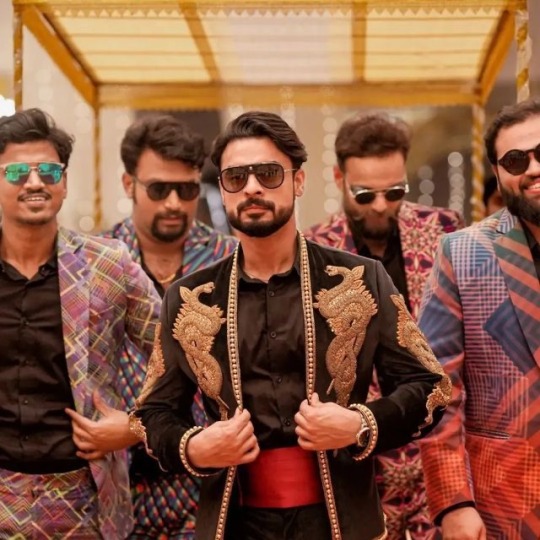
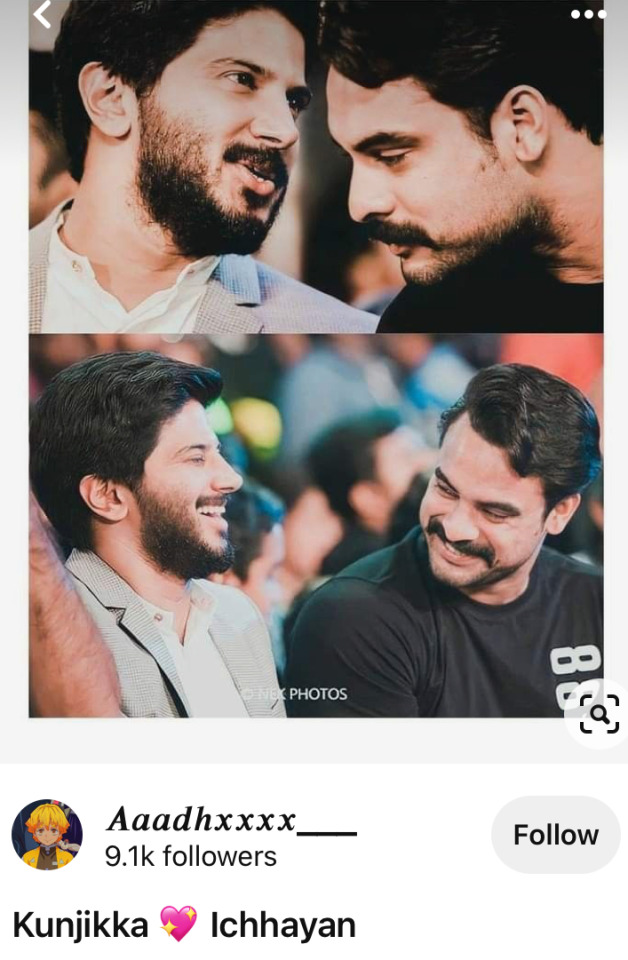
NYAHAHAHAHAHA









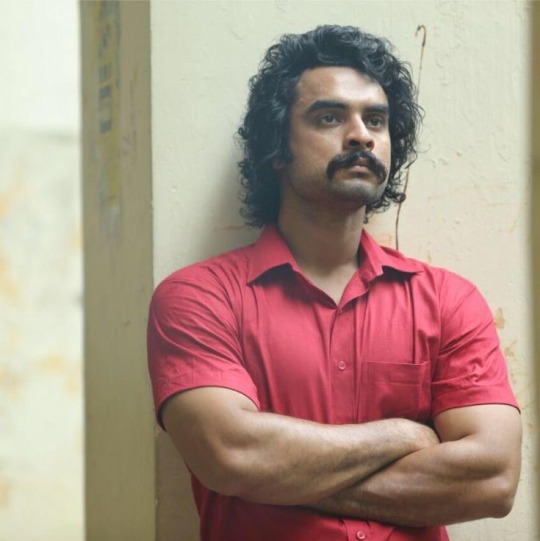





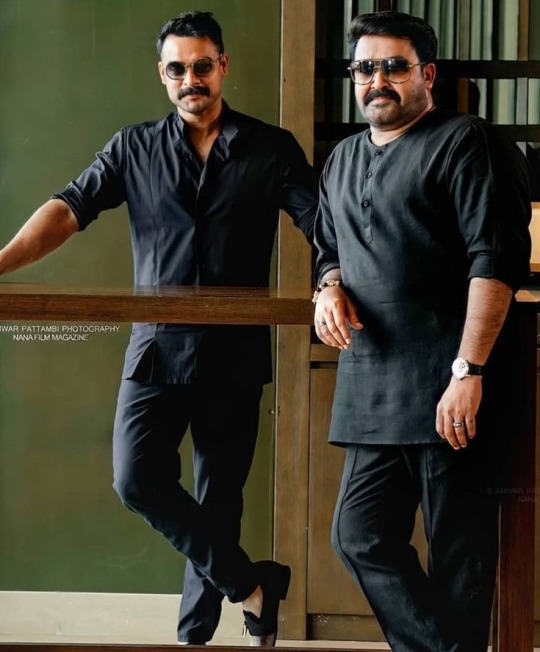
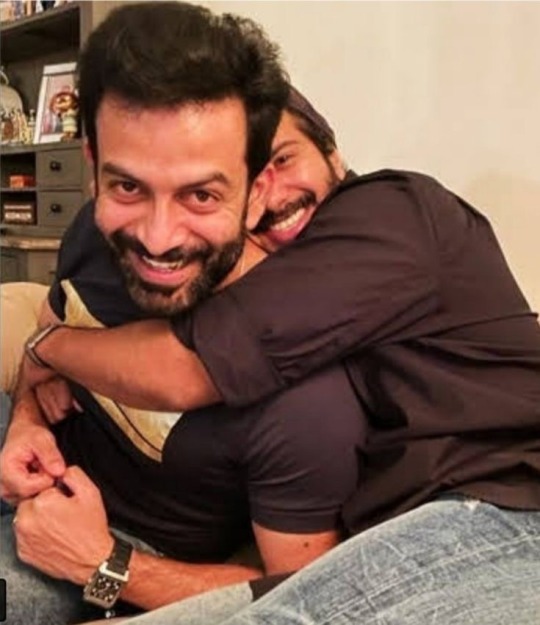
Prithviraj Sukumaran and DQ!!!

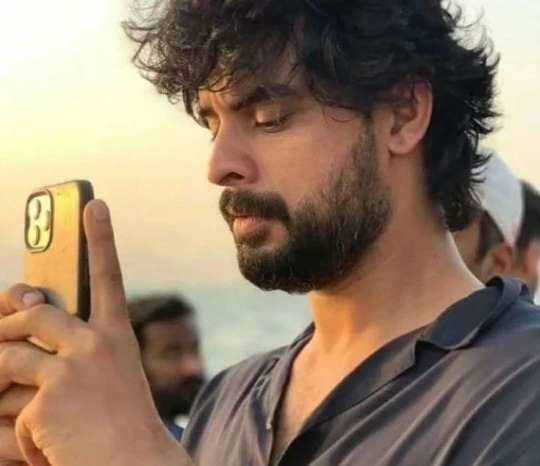
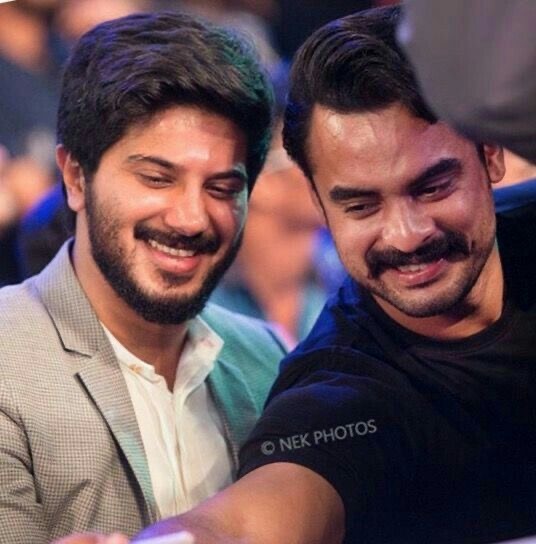


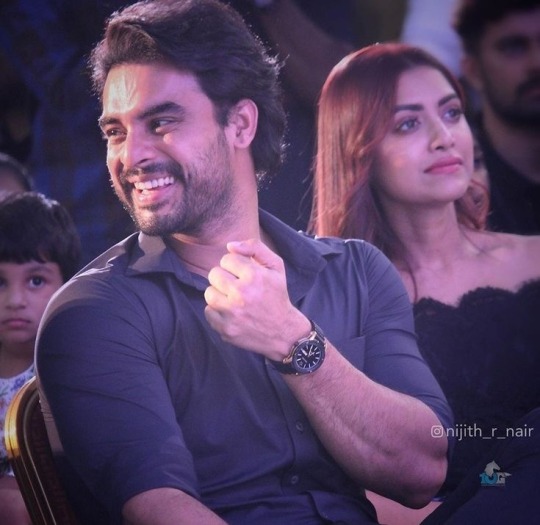

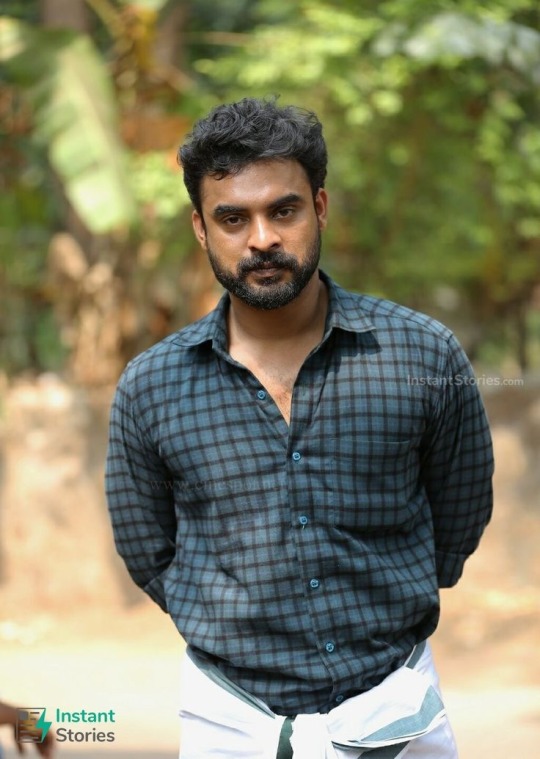


#mollywood#malayalam#tovino thomas#dq#dulquer salmaan#mohanlal#minnal murali#south indian cinema#malayali heroes
7 notes
·
View notes
Text

#apartment buildings#chennai#driving#actress#movies#cinema#song#flight attendant#malaysia#make money from home#dog#landscape#luxury apartments#old home for sale#old house for sale#sale#dresses#tamilnadu#tamil cinema#tamil girls#telugucinema#telugunews#teluguactress#telugu stories#part time jobs in usa telugu#kannada#malayalam#malayali#boat#classic
0 notes
Text
Except the ones from Bollywood....they manage to be so cringey with that unnecessary comedy that you forget you're from the continent mastering horror. Indian mainstream cinema doesn't seem remotely interested in exploiting or even aware about the rich local horror myths. Regional cinema on the other hand delivers well but they are far and few.
i think at this point everyone can agree that asian horror will always have a superior hold on paranormal horror. demons, ghosts, and etc are just way scarier coming from any asian country. good for them
#if disappointment was an instituion it'd be Bollywood as a whole barring regional cinema#and that's just sad#so very sad#they all try and fail miserably at aping Hollywood despite thinking Hollywood's the best there's to offer#they have mastered cringe tho#it's infuriating#bollywood#tollywood#regional cinema#But Malayali cinema rocks ngl
215 notes
·
View notes
Text
no because this was massively important for us.
our mega star once spoke in misery and rage of how people even in film festivals across India knew only Bollywood, Tamil cinema and Malayali cinema but there was zero recognition to Telugu cinema.
within our country.
and now, because of one man and his insanity and his vision, we stand with an Oscar in front of the entire fucking world.
to the dreamer, to the achiever that jakkanna is, take a bow 🙇♀️🛐🛐🛐
what is pride if not you?
448 notes
·
View notes
Text
The Visionaries Behind Bollywood’s Music Magic
The Bollywood music industry has always been a dynamic space where tradition meets innovation. Over the years, numerous artists have emerged, each bringing their unique flavor to this vast ocean of melody and rhythm. Among them, five individuals stand out for their exceptional contributions and their ability to redefine the art of music-making. Let us delve into the remarkable journeys of Alisha Chinai, Jeet Gannguli, Benny Dayal, Rochak Kohli, and Abhijit Vaghani, whose work continues to shape the heartbeat of Indian cinema.
Bollywood in the 1980s and 1990s saw the rise of several musical legends, but few had the audacity to break the mold like Alisha Chinai. Known as the "Queen of Indipop," her bold, unconventional style set her apart from her contemporaries. Alisha Chinai made waves with hits like Made in India, a song that became an anthem of the time. She also lent her voice to Bollywood numbers that defined entire eras. Her journey, however, was not without its challenges. Fighting societal norms and industry expectations, she carved out a niche that still influences today’s artists. Alisha’s ability to balance pop music with Bollywood playback singing underscores her versatility and resilience.
While Alisha brought boldness to the forefront, Jeet Gannguli became a master of emotion. His melodious compositions are a testament to his understanding of the human heart. Jeet Gannguli burst onto the scene with tracks that captured the essence of love, loss, and longing. Songs like Suno Na Sangemarmar and Muskurane remain favorites among listeners for their haunting beauty. Jeet's approach to music blends traditional instruments with contemporary techniques, making his work both timeless and innovative. Beyond his success, Jeet is a symbol of how dedication and passion can transform raw talent into legendary status.
As the industry evolved, so did its demand for versatile voices. Enter Benny Dayal, a singer with unmatched energy and charisma. Benny Dayal redefined playback singing with his ability to adapt to a variety of genres. From the high-energy Badtameez Dil to the soulful Kaise Mujhe, Benny’s vocal range is awe-inspiring. His dynamic stage presence further cements his reputation as a complete performer. A Malayali boy with a dream, Benny’s rise to fame is a story of persistence, talent, and the unyielding desire to leave a mark. His contribution to Bollywood music is not just about songs but about creating unforgettable moments.
While Benny brought innovation to singing, Rochak Kohli reimagined the art of composition. His songs often strike a delicate balance between emotion and experimentation. Rochak Kohli debuted with Pani Da Rang, a track that became an instant classic. What sets Rochak apart is his knack for storytelling through music. Tracks like Tera Yaar Hoon Main showcase his ability to connect with listeners on a deeply personal level. Rochak’s music often feels like a conversation, one that lingers long after the last note fades. His journey as a composer is a testament to the power of authenticity and the willingness to take creative risks.
Behind the scenes, producers play a pivotal role in crafting the soundscapes of Bollywood. Abhijit Vaghani is one such visionary who has mastered the art of music production. From remixing iconic songs to creating original tracks, Abhijit’s work spans a broad spectrum. His ability to blend traditional melodies with modern beats has given Bollywood music a fresh perspective. As the man behind several hit albums, Abhijit’s attention to detail ensures that every song he produces is of the highest quality. His contributions often go unnoticed by the audience but are indispensable to the final product.
The journeys of these five artists highlight the diversity and richness of Bollywood music. Alisha Chinai’s fearless innovation, Jeet Gannguli’s emotional depth, Benny Dayal’s boundless energy, Rochak Kohli’s artistic precision, and Abhijit Vaghani’s production prowess collectively showcase the power of music to transcend boundaries. Each of these individuals has faced challenges, adapted to changing trends, and left an indelible mark on the industry.
As we celebrate their work, it is impossible not to acknowledge the broader impact of Bollywood music. It serves as a unifying force, bringing together people from diverse backgrounds and cultures. The efforts of these artists remind us that music is not just entertainment but an essential part of our shared human experience.
Their stories are not merely tales of success but lessons in resilience, creativity, and the pursuit of excellence. For anyone aspiring to make a mark in the world of music, these five icons stand as shining examples of what is possible.
0 notes
Text
Darshana Mini, Rated A (11/26/2024)
Rounding out our 2024 season, Darshana Mini joined us to delve into the complex cinematic terrain of Malayalam soft-porn cinema.
instagram
Here's what working group respondents had to say:
Respondent 1:
Rated A is about soft porn as work. The work of willing precarity, of waiting, of finding distributors, or even the work of digital “nontouch” (164) all woven into a tapestry of effort by different cine-workers. Soft porn emerges as a discursive act that brings together media publics, but the book is more interested in questions of laboriousness than in hand-wringing about the imagined degeneracy of these publics. It’s hard to sum up a book’s “usefulness” to a discipline because it always amounts to a reduction, especially so for this book, which spans interdisciplinary gaps as well as synthesising media industry history with granular textual analysis. The greatest strength of Rated A is its syncretic methodology, which neither gets too enmeshed in the empirical particulars of ethnography nor theorises about media from above by eliding accounts that disprove long-held assumptions about certain kinds of labour.
Grounded in political economy and feminist theorization, Mini’s book returns again and again to an important observation – soft porn films kept the Malayali film industry afloat through economic crises, and they continue to circulate as a representational resource in what Mini calls the “soft-porn unconscious” as soft porn moves from blue films to digital devices. Rated A is therefore a materialist mapping of the soft porn industry’s circuits of production, and the mobilization of trust-based informal networks where precarity is turned into a kind of currency, often by precarious cine-workers themselves. Mini animates these narratives of precarity with testimonies from producers, distributors, film technicians and artists who take pride in their resourcefulness and agency. So the book’s refusal of sexual moral panic also extends to a refusal of pity towards cine-labourers, because it takes their narratives seriously as a point to theorize from.
One of the most arresting theorizations in the book is of “embodied vulnerability” in Chapter Three (‘Precarity and Body Work’) that takes off from the second chapter (‘Waiting for Kodambakkam’), in which Mini deftly maps an entire spatialised economy of waiting in the Kodambakkam locality of Chennai. Taking up the exploration of waiting as a kind of social activity from anthropologist Ghassan Hage, Mini argues, “Hopefuls waited, but not necessarily through a storm or a crisis. Their waiting was more akin to an athlete’s training during the offseason. It is not passive, but strategic—an “explicit expression of agency” that filters the investment of time through hope.” (61) She further goes on to think of wait-time as a byproduct as well as currency that can be tendered to move through a casualized industry. In chapter three, where Mini discusses Silk Smitha, Shakeela and the body double Surayya Bhanu, the concept of wait time productively interacts with how Mini’s term “embodied vulnerability” to create a field of material possibilities. Precarity is both “a shared problem and a condition with potential to forge solidarities between cine-workers.” (88) I appreciate the way Rated A is suffused with a sense of unexpected endurance in an industry that lives in and on lean times, while constantly underlining its institutional invisibility and exploitation of vulnerability. Does this not urge us to think of work as a more expansive category of action that instrumentalizes a social promissory note, the commitment to the act of waiting over the commitment to the job, in certain industries?
The figure of the madakarani casts her long shadow over the book (and I mean this as a compliment), and Mini synthesis a tremendous breadth and variety of literary and visual traditions that make up a very physically and regionally-specific trope that also resonates in soft porn consumption across and beyond India. The madakarani’s legibility as a trope is double-edged for women who are vilified as madakarani and erupts as violent patriarchal diatribes about the chechi – the sexually mature and enticing older woman – who depraves young men through her availability. In chapter five, it was surprising that in contrast to the promise of exposure, the redacted, Sharpie-coloured flesh of the soft porn star worked through an erotics of denial (“no, you may not see”). Mini writes of exhibitors drawing attention to the potential (but suppressed) sexual energy of the image by inviting viewers to imaginatively hypothesize about body parts they cannot see (142). Even the very text of the film and promotions betrays the promise of nakedness in soft porn; might one then think of a larger erotics of waiting? Is this a kind of waiting that trades in the imagined satisfaction of effort being paid off? Whether for the casualized worker, or the spectator straining to see, waiting mobilizes potential without delivery. Extraction of satisfaction, even against the text, seems central to what Mini calls “screen pleasures”. Therefore, is all of soft porn work?
It is often hard to delimit the “object” for scholars using mixed methods and place it spatially, historically and culturally, especially an object that seems to be wriggling away from scrutiny, but Rated A does so with deceptive ease. From beds that change hands, or bodies, between sleeping film workers, to body work(ers) who traverse anonymity and monetized visibility, the Malayalam soft porn industry seems to be constantly in motion, which is a surprising and delightful problem to have with an industry seemingly in decline.
…
Respondent 2:
“Media publics are assemblages of infrastructures, audiences, and meaning-making apparatuses” (9): readers of Rated A encounter this sentence at the very opening of Mini’s text. At first glance, this sentence comes across as a simple introductory observation, elaborating i) the theme of Malayali soft porn cinema with the wider framework of its production and popular reception, while simultaneously ii) situating it within the broader debate on the ‘public sphere’ [particularly against Habermas who takes ‘mass media’ as ‘false’ public sphere (10)]. However, if one is to read closely, Mini subtly demarcates here three central variables through which she will undertake her subsequent inquiry, namely ‘infrastructure’ [Ch. 2 and Ch 3], ‘audiences’ [Ch. 1 and Ch. 5], and ‘apparatus’ [Ch. 4]. I want to ask three questions situated around these three principal categories around which Rated A is broadly structured:
1. Infrastructure: One of the intriguing aspects of soft-porn production is how the industry of “tinsel town,” Kodabakkam, operated as a temporary ‘gig’ for cine-workers while also functioning as an “ur-scene for many of the south Indian film industries” (62). What I find particularly interesting here is how Kodabakkam exists in a paradoxical state where, on the one hand, it emerges as an intermediate step on the ladder of achieving success in the popular film business (as an actor, film producer, cinematographer, etc.), while, on the other hand, its very existence relied precisely upon the failure of cine-workers to make that move from precarity to steady work of popular film industry. This paradoxical state, I would argue, is also reflected in the status of soft-porn cinema, where, on the one hand, it is made by artists who want an eventual break into the commercial film space, but, on the other hand, it is their inability to make a move to the commercial, and ‘reputed’ one might add, world of cinema that makes them contributors in the world of soft-porn industry. I wanted to ask here how this strange liminality of soft-porn infrastructure affected the way in which you theorize the soft-porn industry? [contra to the established porn industry of, say, the USA]
2. Audience: Just like the cine-workers who ‘moonlight’ various jobs while “waiting,” the audience of the soft-porn also occupies various contradictory ‘roles.’ On the one hand, they watch soft porn in either shabby theaters or through pirated DVDs [Ch. 5], giving the whole enterprise a shade of secrecy and taboo. On the other hand, the audience’s engagement with the ‘soft-porn’ stars is outrightly public, demonstrated through their insatiable appetite for magazine and newspaper tidbits of the private life of the soft-porn actors [Ch 1] and in the act of publicly mourning the demise of their favorite stars or in receiving a new emerging star [Sunny Leone]. Amidst this strange contradiction, how do you read and situate this “public” (and I am thinking particularly about your move against the theorization of the ‘public sphere’ by Habermas)?
3. Apparatus: This is a bit of a general question, but I have been wondering how, and in what ways, our understanding of media would change/shift/morph if we were to displace soft porn from the margins and take its formation (from the base level of labor to superstructure level of its cultural production) as an “ur-scene” of modern media/film industry? Do the popular Indian film industries simply “suppress” (to use psychoanalytic language) what runs ‘naked’ in the margins? (In parenthesis, I find here the making of ‘dirty picture’ an interesting case study precisely because it both eroticizes and sanitizes the B-grade films in the same move; a paradoxical task, but it seems we are in realms of paradoxes).
0 notes
Text
KK’s Timeless Hits: Songs That Touched Millions
Krishnakumar Kunnath, affectionately known as KK, was more than just a playback singer — he was a sensation who captured the soul of Indian music lovers. Rising from humble beginnings, KK’s journey to becoming a beloved figure in Bollywood is nothing short of inspiring. Known for his versatile voice, KK seamlessly blended emotions and melodies, earning a special place in the hearts of millions. His story is a testament to passion, hard work, and an undying love for music.
Early Life and Foundation
KK was born on August 23, 1968, in Delhi, to a middle-class Malayali family. Growing up, his passion for music was evident. From school programs to small gatherings, KK’s voice stood out as extraordinary. He attended Mount St. Mary’s School and later graduated from Delhi University’s Kirori Mal College.
Before Bollywood beckoned, KK honed his skills in the advertising world, singing over 3,500 jingles in 11 languages. This phase was crucial, as it helped him explore his vocal range and gain confidence in his abilities. Despite being an untrained singer, KK’s natural talent and ability to convey emotions through his voice set him apart.
Bollywood Breakthrough
KK’s breakthrough in Bollywood came in 1999 with the soulful track “Tadap Tadap Ke” from Hum Dil De Chuke Sanam. Composed by Ismail Darbar and penned by Mehboob, the song showcased KK’s ability to evoke profound emotions. His raw, heartfelt rendition struck a chord with audiences, propelling him to instant stardom. The track remains one of Bollywood’s most iconic heartbreak anthems to this day.
Following this success, KK became the voice behind numerous blockbuster songs, delivering hits like “Tu Hi Meri Shab Hai” (Gangster), “Aankhon Mein Teri” (Om Shanti Om), and “Kya Mujhe Pyaar Hai” (Woh Lamhe…). His songs not only resonated with audiences but also became integral to the storytelling in Indian cinema.
Defining Characteristics: Why KK Stood Out
KK’s unique ability to adapt his voice to different moods and genres made him a standout in the industry. Whether it was the romantic ballad “Khuda Jaane” (Bachna Ae Haseeno), the energetic “It’s the Time to Disco” (Kal Ho Naa Ho), or the introspective “Alvida” (Life in a… Metro), KK infused his distinct touch into every track.
Unlike many of his contemporaries, KK avoided the limelight. He rarely appeared in public, preferring to let his music speak for itself. This humility and focus on his craft endeared him to fans and colleagues alike. His songs, often filled with raw emotion, connected deeply with listeners, creating a timeless appeal.
Milestones and Achievements
KK’s contribution to Indian music extended beyond Bollywood. In 1999, he released his debut solo album “Pal,” which became an instant classic. Tracks like “Yaaron” and “Pal” resonated with the youth and became staples at farewells, reunions, and celebrations. The album cemented KK’s position as a pop icon and showcased his versatility beyond film music.
Over the years, KK sang in multiple languages, including Tamil, Telugu, Kannada, Malayalam, and Bengali. His Tamil song “Appadi Podu” became a nationwide phenomenon, showcasing his ability to transcend linguistic barriers. Despite the challenges of working across different musical traditions, KK’s adaptability and dedication allowed him to excel in every genre he explored.
Impact on Bollywood Playback Singing
KK’s entry into Bollywood brought a fresh wave of emotional depth and authenticity to playback singing. His voice became synonymous with sincerity and passion, a perfect fit for narratives centered on love, loss, and longing. Unlike many singers who leaned heavily on classical training, KK’s self-taught approach brought a contemporary, relatable quality to his music.
Many of today’s young artists cite KK as an influence, praising his ability to convey emotion effortlessly. His songs continue to inspire aspiring musicians, proving that true artistry lies in connecting with the audience on a human level.
A Legacy of Humility and Talent
Throughout his career, KK remained grounded and focused solely on his music. He avoided the trappings of fame, shying away from controversies and maintaining a low profile. His commitment to his craft was unwavering, and he often spoke about how he viewed music as a way to touch lives.
This humility extended to his interactions with fans and colleagues. KK’s dedication to music was matched by his kindness and professionalism, making him a beloved figure both on and off stage.
Conclusion: An Enduring Icon
KK journey from a jingle singer to a Bollywood sensation is a story of perseverance and passion. His songs, filled with emotion and melody, continue to inspire and uplift listeners. Despite his untimely demise, KK’s legacy endures through his timeless music. His voice remains a cherished part of countless memories, a testament to the power of art to transcend time and space.
Which KK song has left an indelible mark on your life? Share your favorite track or memory in the comments below. Let’s celebrate the incredible legacy of a voice that defined an era.
To explore more about KK’s extraordinary journey and discover his top songs, visit the blog for a curated list of his best tracks and hidden gems. Let’s honor the timeless magic of KK’s music together!
0 notes
Text
Manorathangal: Reflecting Malayali Society on Screen – Aswathy V. Nair | The Brew News
Explore how 'Manorathangal' captures the essence of Malayali society through the lens of Aswathy V. Nair. Discover the cultural significance of this OTT release and its impact on the silver screen. Read more on The Brew News.
0 notes
Text


Esthappan (1980), dir. Govindan Aravindan
3 notes
·
View notes
Text
Just a few days after writing a post about the RG Kar Medical College rape case that was brought to light on India's independence day, another case of multiple sexual assaults on women working in Malayalam cinema has been revealed on Raksha Bandhan.
Back in 2017, a prominent Malayali actress was abducted from her car and raped by men. Out of the eight suspects, Dileep, arguable one of the most famous Malayali actor, was also accused. The case never went forward, remained in its trial stages, and Dileep continues to get paid in millions even now. However, just to help the women in their workplaces, a committee was established with women's safety in mind. And now it has been revealed that this committee failed spectacularly.
Women are asked for sexual favours just to get a role in the movie. They are not provided basic necessities like access to the washroom. They are sexually harassed by prominent men because most movies usually ALWAYS have men as producers, directors and actors and these men use their power to destroy lives.
A 235 page report, consisting of statements made by key witnesses, describing all the sexual exploitation they faced was submitted to the government back in 2019! Roughly five years later only was it made public. Ironically, a recent Malayalam movie was given a national award for handling the topic of sexual exploitation quite spectacularly. It would've been hilarious had it not been such a serious topic.
Women get raped everywhere. On the roads, in their workplaces, even in their homes and yet people keep their 'neutral' stance where they claim the don't know much about the case and, 'not all men are like this!' Wake up. Wake up and look at the hellhole you live in and hate it with all your heart. Hate the way we've stooped so low that we still think rapists deserve a chance. Fight against it and maybe with small efforts from all of us, we could establish a world where our security is truly a right.
#india#desi#desiblr#tw r4p3#kerala#misogny#feminism#bharat#90 rape cases were reported EVERY DAY in 2022#what are we doing#why are we not doing anything at all?
1 note
·
View note
Text
Cannes 2024: Grand Prix Award For An Indian Film

A very precious moment for Indian cinema, as an Indian film creating history at the 77th Cannes Film Festival.

Payal Kapadia and her team made this film an award winning movie and takes the pride and honor to be represented at the centerstage in an international level.
The filmmaker became the first person from India to receive this prestigious Grand Prix Award at the 2024 Cannes Film Festival. The Grand Prix Award is the second largest award after the Palme d’Or.
The movie “All we Imagine As Light” is gaining popularity and recognition after the great success. Payal’s film is basically a drama that centered and picturized to show the life of two Malayali Nurses and their way of living and navigating in the crowd of Mumbai.

During the release of the premier at the Cannes Stage, this movie and the team received an eight-minute appreciation via standing ovation. The movie also gets rare and real reviews from all over the world, the media critics, news channels, social media and much more. View All
#indian#movie#allweimagineaslight#filmmaker#payalkapadia#grandprixaward#cannes2024#fashion#trends#trending
1 note
·
View note